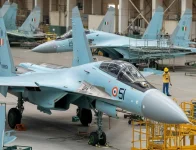- Views: 2K
- Replies: 14
India's indigenous Light Combat Helicopter (LCH) 'Prachand' could soon be transformed into a long-range precision strike platform, capable of hitting targets from a safe distance of up to 300 kilometres.
The potential upgrade comes as a result of an offer from Israeli firm RAFAEL Advanced Defence Systems, which has confirmed that its advanced 'Ice Breaker' missile can be equipped on the Indian attack helicopter.
The Ice Breaker is a 5th-generation autonomous missile system designed to strike high-value targets on both land and sea.
According to officials from RAFAEL, the missile, which has already been offered to the Indian Air Force (IAF) for its fighter jets, is also compatible with the Prachand helicopter.
This development could significantly enhance the offensive power of the domestically-produced helicopter, which is built by Hindustan Aeronautics Limited (HAL) and designed for high-altitude warfare.
A feasibility study has already confirmed that the integration is technically possible.
The LCH Prachand has a maximum weapon payload of approximately 920 kg. The Ice Breaker missile weighs around 400 kg, meaning the helicopter could potentially carry one or two of these powerful weapons without a major impact on its performance.
This would provide the helicopter with a "standoff" capability, allowing it to fire at enemy targets from well beyond visual range and outside the reach of most short-range air defence systems.
This capability is particularly relevant for India's strategic needs along contested border areas like the Line of Actual Control (LAC)
The missile's advanced guidance system, which uses a combination of electro-optics, artificial intelligence, and GPS, ensures extreme accuracy even in environments where satellite signals are jammed.
Its ability to perform complex flight patterns and attack from multiple directions makes it effective against both stationary infrastructure, like bunkers, and moving targets, such as warships.
While the offer presents a significant opportunity, a formal decision to procure the missile system is yet to be made by India's defence establishment.
The Ice Breaker has also been offered to the Indian Navy for its fleet of MiG-29K and Rafale M fighter jets. If both the IAF and the Navy were to adopt the missile, it would promote interoperability, allowing for shared logistics, training, and a more unified weapons inventory across services.
The potential adoption of the Ice Breaker missile represents a major step in bolstering the firepower of India's indigenous military platforms.
If approved, the integration would turn the LCH Prachand into a formidable force multiplier, effectively bridging the gap between the traditional roles of helicopters and the deep-strike capabilities of fighter jets.



